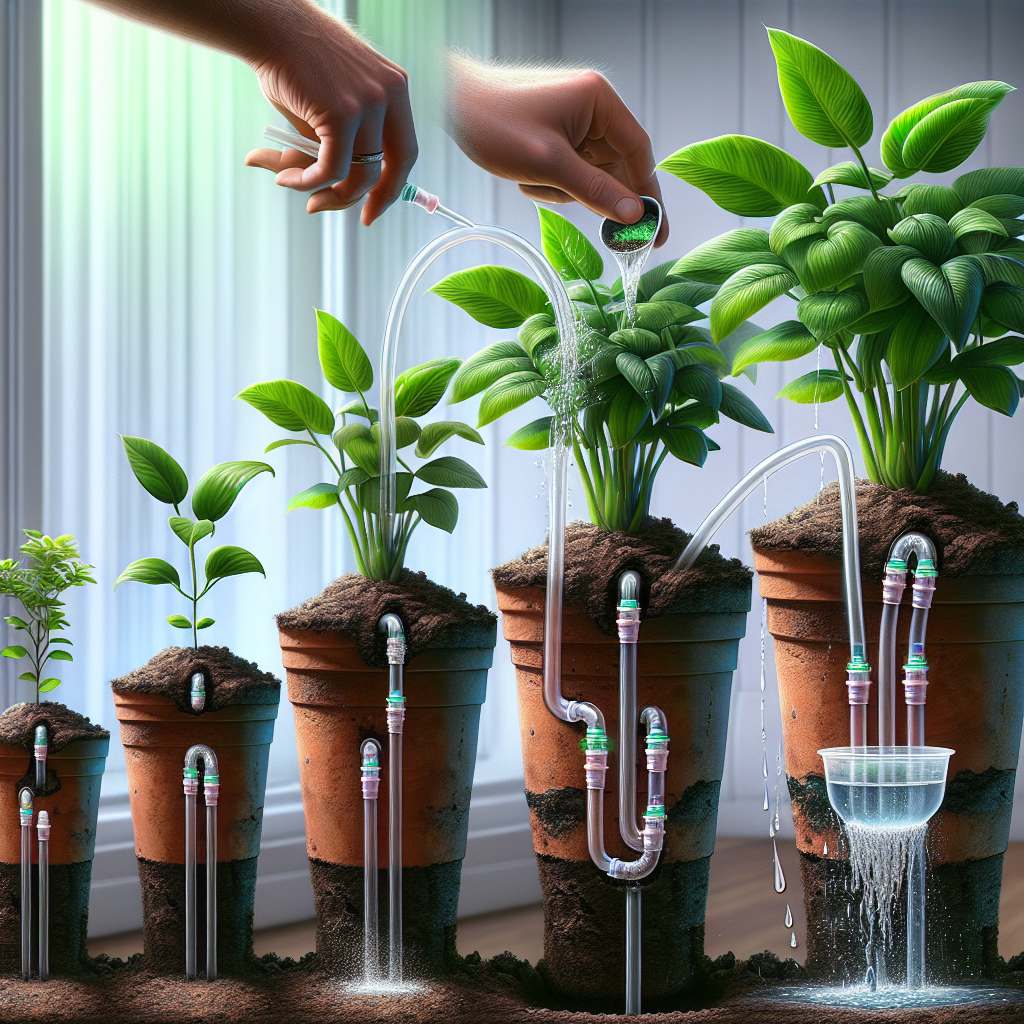Many people love having potted plants in their homes or gardens, but keeping them properly watered can be a challenge, especially if you have a busy schedule or if you’re prone to forgetting to water them. One solution to this problem is to convert your potted plants to a slow drip watering system. This system allows the plants to receive a consistent and even supply of water over an extended period of time, ensuring that they stay healthy and hydrated without the need for constant attention.
There are several different methods for converting your potted plants to a slow drip watering system, each with its own pros and cons. In this article, we’ll explore some of the most popular options and provide step-by-step instructions for setting up each one.
One of the simplest and most cost-effective ways to create a slow drip watering system for your potted plants is to use a soaker hose. Soaker hoses are made from porous material that allows water to seep out slowly along their entire length. To set up a soaker hose system for your plants, follow these steps:
1. Choose a soaker hose that is long enough to reach all of your potted plants.
2. Lay the hose on the soil surface around each plant, making sure that it is positioned close to the base of the plant.
3. Connect one end of the hose to a water source, such as an outdoor spigot or irrigation system.
4. Turn on the water at a low flow rate so that it seeps out slowly through the pores in the hose.
5. Monitor the moisture levels in the soil around your plants regularly and adjust the flow rate as needed.
Another option for creating a slow drip watering system is to use drip emitters or stakes. Drip emitters are small devices that attach to a main hose or tubing and deliver water directly to the roots of individual plants. Drip stakes are similar but are designed to be inserted into the soil near each plant’s root zone.
To set up a drip emitter or stake system for your potted plants, follow these steps:
1. Choose drip emitters or stakes that are appropriate for your plant’s size and watering needs.
2. Insert one emitter or stake near each plant’s base, making sure it is positioned close to the root zone.
3. Connect all of the emitters or stakes to a main line of tubing or hose.
4. Attach this main line to a water source and adjust the flow rate as needed.
5. Monitor soil moisture levels regularly and make any necessary adjustments.
If you prefer a more automated approach, you can also consider installing a programmable timer on your slow drip watering system. Timers allow you to set specific watering schedules based on factors like plant type, size, and location.
To set up a programmable timer for your potted plants’ slow drip watering system, follow these steps:
1. Install the timer according to manufacturer instructions near your water source.
2.Connect it between your main line of tubing or hose and water source.
3.Set up specific watering times and durations based on your plants’ needs using the timer’s controls.
4.Monitor soil moisture levels periodically until you find an optimal schedule.
Overall, converting your potted plants’ irrigation systems from manual watering methods over slow-drip systems can offer numerous benefits both for yourself and your beloved greenery alike:
1.Reduced Water Waste: Slow-drip methods deliver precise amounts of moisture directly where it’s needed most—reducing runoff waste typical with traditional overhead irrigation techniques.
2.Less Likelihood of Overwatering: Automated systems help prevent overwatering by providing just enough hydration at intervals determined by specific environmental conditions such as temperature changes throughout seasons.
3.Optimal Root Health: Consistent hydration through gradual delivery ensures root systems remain healthy by promoting deep growth rather than shallow roots susceptible more likely toward damage from drought stressors like heatwaves or periods lacking rainfall amounts typical during summer months etcetera…thus benefiting overall plant vitality!
Maintaining an efficient slow-drip irrigation method doesn’t necessarily have stringent requirements—just staying mindful natural elements affecting timely hydration adjustments according seasonal changes significant factors decisions made help encourage thriving greenery living spaces!














